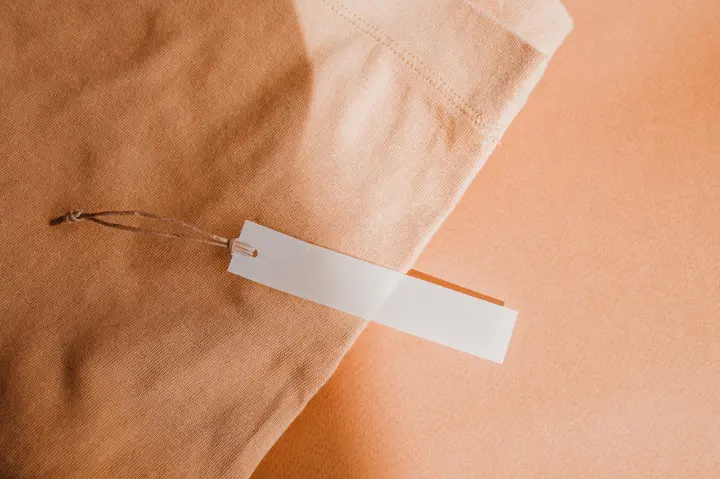When disaster strikes and you spill something on your favorite silk blouse or cashmere sweater while away from home, quick action can make the difference between saving your garment and permanent damage.
Delicate fabrics require special care, especially when dealing with unexpected stains on the go. This guide provides practical strategies to manage stains on premium fabrics until you can properly treat them at home.
Act Fast
Speed is essential when dealing with any stain, particularly on delicate fabrics. The longer a stain sits, the more time it has to bond with fabric fibers, making it increasingly difficult to remove. Even when proper cleaning supplies aren't available, taking immediate action can significantly improve outcomes:
- Blot (don't rub) the stain immediately with a clean napkin or paper towel.
- Remove excess material gently with a spoon or a card edge.
- Keep the stained area damp if possible to prevent setting.
- Avoid applying heat, which can permanently set many stains.
Identify the Stain Type Before Taking Action
Different stains respond to different treatments, making identification crucial before attempting any remedy:
- Protein-based stains (blood, dairy, egg): These can set permanently with heat or hot water. Keep these stains cool and moist until proper cleaning.
- Tannin stains (coffee, tea, wine): These acidic stains can become permanent if treated with soap prematurely. Rinse with cool water when possible.
- Oil-based stains (makeup, salad dressing): These require a degreasing agent for complete removal. Blot the excess immediately without spreading the stain.
- Dye stains (berries, mustard): These penetrate fibers quickly. Immediate dilution with water can help limit the damage.
Emergency Stain Solutions with Common Items
When caught away from home, these everyday items can become helpful stain management tools:
- Plain carbonated water: Effective for diluting and lifting many fresh stains without damaging delicate fabrics.
- Ice cube: Can help keep protein stains from setting while cooling and diluting the stain.
- White bread: The soft interior can work like a sponge to gently lift greasy stains from delicate fabrics.
- Baby wipes: Alcohol-free varieties can safely blot many stains without damaging sensitive fabrics.
- Corn starch or baby powder: Can absorb fresh oil stains if left to sit for 15-20 minutes, then gently brushed away.
Fabric-Specific Emergency Care
Different luxury fabrics require unique approaches when stained:

- Silk: Extremely water-sensitive, particularly when wet. Blot stains gently, avoid rubbing, which can damage the fibers or create a permanent water ring. Keep the area air-circulated but away from direct heat or sunlight.
- Cashmere and fine wool: Avoid hot water, which causes shrinkage. Cold water can help dilute stains, but excessive moisture should be avoided. Never wring or twist these fabrics when wet.
- Chiffon, organza and delicate synthetics: These can be slightly more resilient to water than silk, but their delicate weave can be easily distorted with aggressive handling. Treat with minimal pressure.
- Lace: Requires extremely gentle handling. Support the fabric underneath when blotting to prevent stretching or tearing of the delicate pattern.
- Velvet: Requires careful stain management to avoid crushing the pile. Blot very gently without pressing down hard, and avoid getting the fabric overly wet.
What to Avoid at All Costs
Some common interventions can cause permanent damage to fine fabrics:
- Hand sanitizer or alcohol-based products. (can dissolve dyes in many fabrics)
- Hot air dryers in public restrooms. (Heat sets stains permanently)
- Club soda with additives or colored sodas (may create new stains)
- Vigorous rubbing of any kind. (damages delicate fibers)
- Layering stained areas on top of each other. (can transfer stains)
Preparing for Transport Home
Once immediate intervention is done, proper transport can prevent further damage:
- Keep stained areas from touching other parts of the garment.
- Avoid folding along stained areas, which can transfer the stain.
- Place a barrier like clean tissue, the stained fabric, and other surfaces.
- Keep stained protein-based spots damp with cool water if possible.
- Shield the garment from heat, including direct sunlight and hot car interiors.
Creating an Emergency Stain Kit
For those who frequently wear delicate garments, consider creating a mini emergency kit:

- Individually packaged alcohol-free wipes.
- Small packet of absorbent powder. (cornstarch or talc)
- Stain removal pen is specifically formulated for delicate fabrics.
- Small spray bottle with plain water.
- Clean white handkerchief or microfiber cloth.
- Small plastic bag for isolating stained items.
When You Get Home
Upon returning home with your stained, delicate garment:
- Check care labels before treatment.
- Test any cleaning solution on an inconspicuous area first.
- You can also consider delicate washing for valuable or particularly delicate items.
- Follow up with proper stain treatment promptly, as pre-treated stains are easier to remove.
- Document successful stain treatments for future reference.
By taking these immediate steps when stains occur, even the most delicate garments have a better chance of complete restoration. Remember that these emergency measures are designed to buy time until proper cleaning can be performed, either at home or by expert cleaners who specialize in delicate fabrics.